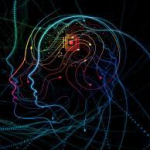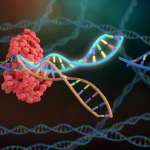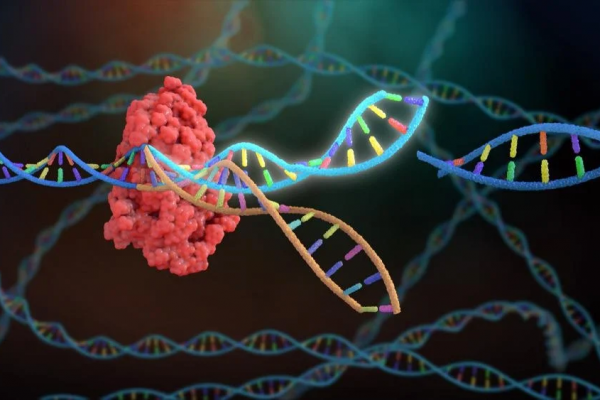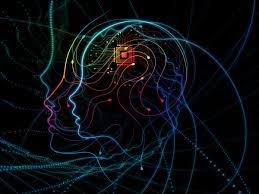By: Malika Saxena
Human interactions are primarily based on our ability to understand and empathize with the words and actions of others. Often, our thoughts and feelings are conveyed without using words, and this is may be the result of a mirror neuron system (MNS). The job of the MNS is to reproduce tasks when observing the same action performed by another. For example, instinctively smiling as a result of seeing someone else smile can be explained by this phenomenon. Deficits in emotion and action recognition can arise due to damage to these mirror neuron systems, and various scientists have conducted research on the extent of damage that can occur before noticeable socio-emotional abnormalities arise. Recently, Anat Perry and other researchers in the Knight Lab at UC Berkeley examined people with lesions on the Lateral Prefrontal Cortex (LPFC), a core mirror neuron system region, to see their effects on performance in a series of tasks that measure one’s ability to recognize others’ actions and emotions. Studying the role of these lesions in the LPFC may help determine how to best help people (including those who have suffered from traumatic brain injuries as well as those with social disorders) understand the thoughts, feelings, and intentions of others. Not only that, but because people are now facing more and more situations with people of diverse backgrounds, having a better understanding of how we understand others could lead to improvements in how we handle social change.
In order to understand the mirror neuron’s role in determining our response to behavioral cues, we must first understand the Perception-Action Model. This theory proposes that the perception of a behavior in someone else can activate one’s own schema, a mental “algorithm,” for that behavior, and output from this representation can proceed to motor areas, like the inferior parietal lobule and inferior frontal gyrus, where responses are prepared and performed. Within the past two decades, research on the human MNS has thrived and been linked to various aspects of human cognition, including action understanding, imitation, motor learning, speech perception, and language development. Past studies have shown that patients with lesions on some parts of the human MNS can have deficits in action and emotion recognition, but undamaged parts of the human MNS may be sufficient for partaking in certain tasks. This study elaborated on past findings and used a new, previously untested method in which 17 patients with lesions on their Lateral Prefrontal Cortex, including or not including the Inferior Frontal Gyrus, were compared to healthy control subjects in a series of tasks. The researchers hypothesized that the LPFC lesions may have a greater effect on emotion recognition than on action/gesture recognition, and their results are consistent with this hypothesis.
The experiment itself included a variety of tests. In the first part, participants were asked to name the action performed by figures in Point Line Display videos—each clip has a human with points of light at each joint performing a simple task. Response time of the subjects as they observed the action and stopped the video was calculated; they had an unlimited amount of time to tell the researcher in the room what action was observed. The researchers found that the presence of lesions on the LPFC affected reaction time (it took the patients longer to respond) but not their accuracy. Another test displayed a variety of hand gestures and asked participants to analyze the meaning of the movements. Again, no significant difference between LPFC lesioned and non-lesioned groups was found in accuracy, although there was an overall delay in speed compared to the control group. The third test required participants to choose the emotion that best described a video they watched, and they found that LPFC lesioned and non-lesioned groups both had slower response times than the control group. Reading the Mind in the Eyes test was another test that measured the ability to accurately determine one’s mental state (happy, sad, confused, etc). The difference between the LPFC lesioned group and controls in this case was significant. Lesion patients were both slower, and had lower accuracy in emotion recognition tasks. The fact that the lesioned group was less accurate in tasks involving the recognition of others’ emotions, without similar deficits for inferring actions, implies that inferring actions may rely on other regions within the brain.
These tests provide support for the role of the human MNS in understanding others’ emotions by showing that lesions in the frontal lobe can affect the accuracy with which one attempts to make sense of others’ emotions more so than in understanding actions. The research implies that there are probably other brain regions that are imperative for comprehending physical movements. In the future, it may be beneficial to study the interaction of multiple systems and their contributions in producing accurate emotional and physical responses. Determining the correct treatments for damage to the MNS is the next step towards inclusivity and understanding others. This research provides a better understanding of how we determine our actions, what drives accurate understanding, and which neural mechanisms underlie these social pressures. Hopefully it allows for improved adjustments to social change, as well, and reinforces the belief that those with mental disorders and brain damage ought to be treated equally in our society. After all, imperfection defines us as humans and drives advancement.






